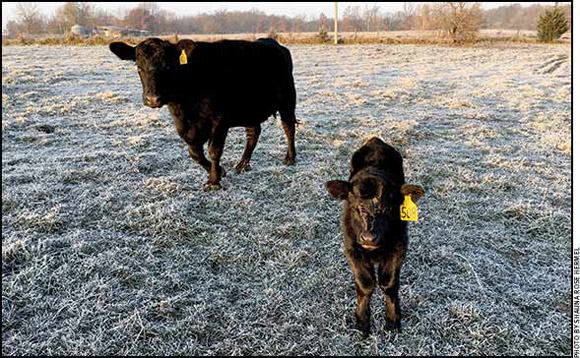

Justin Sexten
Docility: Performance or convenience trait?
We know docility is moderately heritable, calculated at an average coefficient of 0.37, so the trait can be moved in a positive or negative direction through selection. Historically, removing the outliers has been the approach to improving docility in most herds. Recent research published in the Journal of Animal Science by Kelsey Bruno and co-workers at the University of Kentucky (UK) looks at measuring systems and the effect of docility on calves during the receiving period. It offers a different approach to the impact of docility, with that focus on receiving, and penning cattle by their various docility rankings.
Previous research has shown less-docile cattle tend to eat less, a problem compounded with the stress from weaning and shipping to feedyards that can lead to nutrient deficiencies. Penning cattle by docility score, the researchers hypothesized, could allow for diets modified to accommodate lower feed intake.
Docility was determined in two ways at initial processing. The first quantified the variation in weight indicated by the chute scales for each animal. For 10 seconds after the head was caught, the variation in scale weights was calculated; increased variation indicated greater movement in the chute, and these animals were considered less docile. When this docility scoring system was compared to the traditional chute score developed by Temple Grandin, where handlers observe the animal and assign a subjective score (1=calm, 2=restless, 3=squirming/shaking, 4=continuous shaking, 5=rearing, twisting, violent struggling), there was only slight correlation. That, along with unexpected performance results, suggests this new measurement system needs further study.
The second scoring system used in this and many other studies was exit velocity, where faster exit is related to less-docile cattle. The downside to this measure in actual practice is that it’s taken as the animal leaves the chute, thus requiring a later sort for culling.
In the Kentucky study, cattle were penned in four groups: calm in the chute and slow to exit, calm in chute and fast to exit, excited in the chute and slow to exit, and excited in the chute and fast to exit. If you’ve spent much time as monitor at the receiving pen, you can imagine the joy of checking those “less docile” groups. This experiment offered the chance to see if the less-docile cattle exhibit performance differences because of their interaction with tame cattle, or because they are inherently less docile themselves.
There were no interactions between the two scoring systems, so the team was able to look at exit velocity independently. The fast-exiting cattle gained 0.18 pounds (lb.) per day less during the 58-day receiving period than the slow (docile) counterparts. Feed intake was 1.1 lb. per day more for slow-exiting cattle, an expected result that was the basic rationale for feeding different diets based on docility classification.
However, the increased-nutrient-density diet for less-docile cattle in this experiment had no effect on the group’s performance regardless of the scoring method. That suggests the higher dietary protein levels used were either not high enough to overcome lower feed intake, or docile cattle are more efficient at nutrient use.
While this work didn’t report carcass merit, we know in Tri-County Steer Carcass Futurity data calves that were calm or simply swished their tail while in the chute consistently returned more dollars to the feeding enterprise through improved quality grade while maintaining better health.
How we identify docile cattle will continue to evolve, depending on where you are in the supply chain, but there are clear benefits to maintaining focus on improved docility from ranch through harvest.

Editor’s Note: Justin Sexten is director of supply development for Certified Angus Beef LLC.







